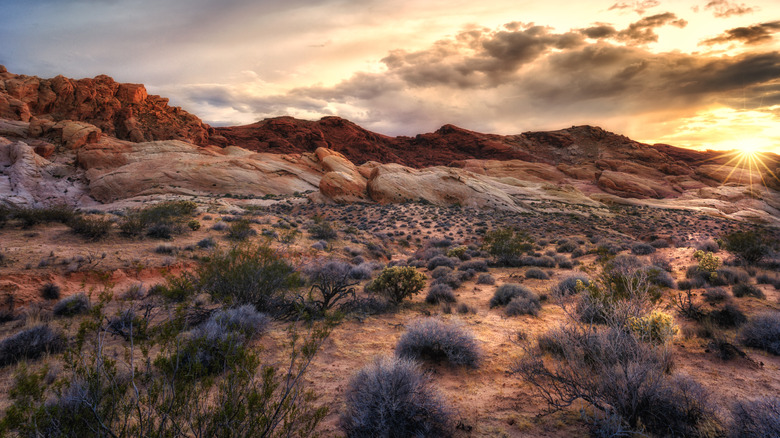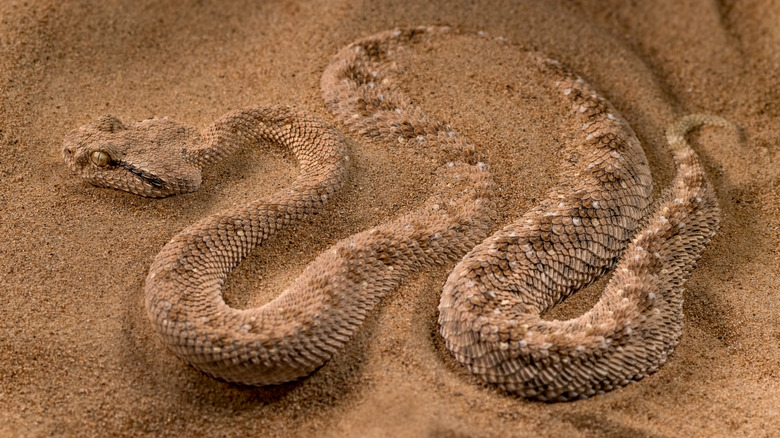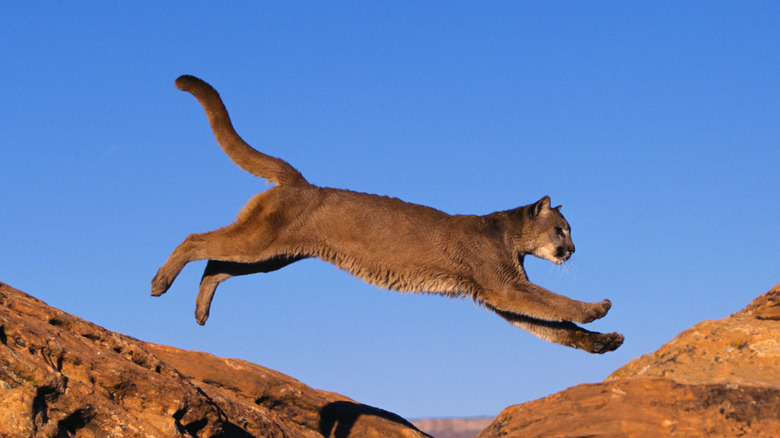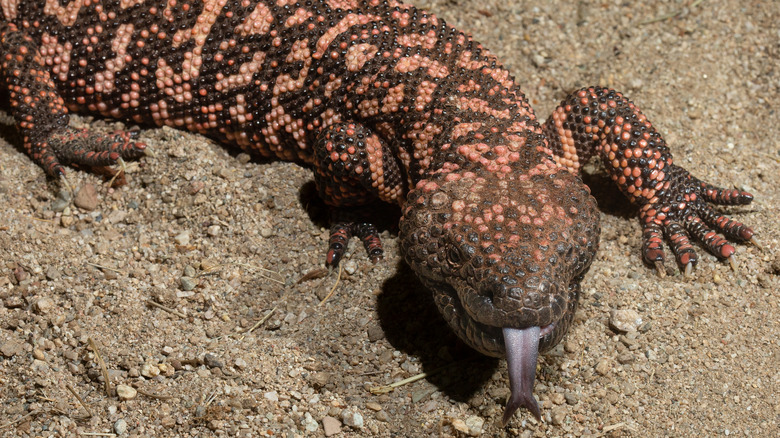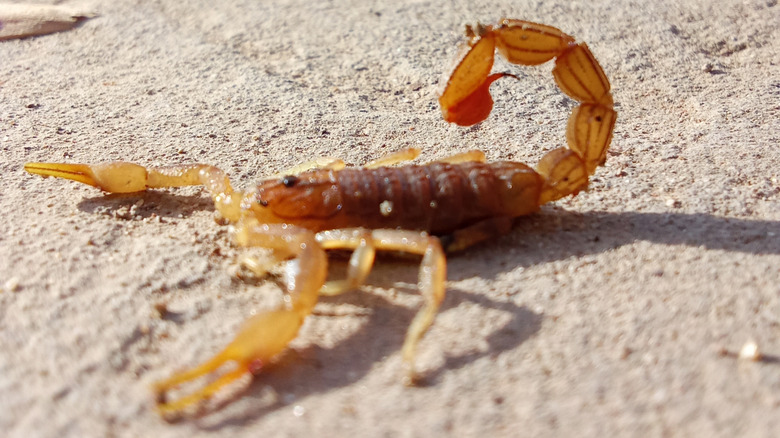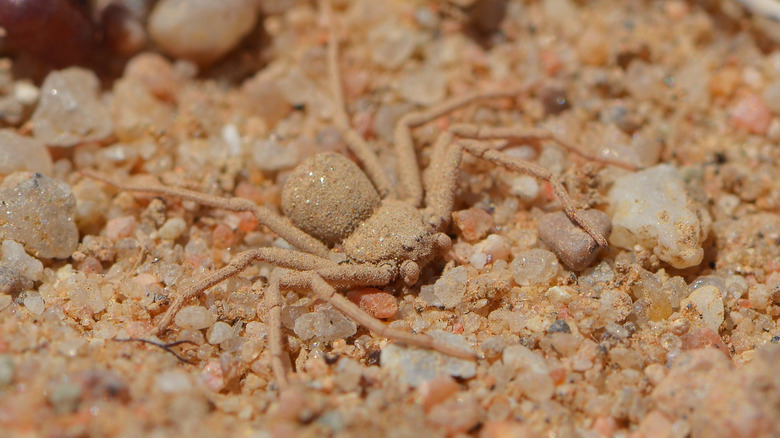5 Creatures To Beware Of When Adventuring In The Deserts Of Nevada
The state of Nevada is almost entirely covered in desert landscape. The vast majority of that territory is part of either the Great Basin or Mojave desert, although several other deserts are part of the state as well, most notably the Black Rock Desert. Each of these deserts presents numerous hazards for outdoor enthusiasts, not the least of which are some of the animals which reside there.
The phrase "everything in the desert wants to kill you" is often used to describe the flora and fauna of the harsh desert regions. While that may not be entirely accurate, it certainly doesn't seem that far-fetched, considering the risk of encountering several of the plants and animals found there. Among the creatures to beware of when adventuring in the deserts of Nevada are venomous snakes, dangerous spiders, toxic reptiles, and massive predatory mammals.
Because of this, when adventuring in the deserts of Nevada, it is not only important to guard against the dangers of heatstroke and dehydration, you also need to be aware of your surroundings to help you avoid injuries that can occur from contacting various plants and creatures. To that end, you should always have an emergency gear bag complete with a first aid kit to be able to respond to any emergency that may arise from the desert plants, animals, or elements.
Rattlesnakes represent danger in the desert
Over the years, rattlesnakes have become symbolic of the dangers of the desert. However, this is more than just pop culture imagery. These dangerous types of snakes present a very real danger to humans. Furthermore, they are quite common in the desert. In fact, the deserts in Nevada are actually home to a half dozen different species of rattlers. Among those one may encounter when adventuring in Nevada deserts are the Western Diamondback, Mojave Desert Sidewinder, Great Basin Rattlesnake, Southwestern Speckled Rattlesnake, Northern Mojave Rattlesnake, and Panamint Rattlesnake.
Staying on established trails is one of the best ways to avoid rattlesnakes, although they are known to lay on trails to warm themselves at times. Regardless of being on or off trail, it is also important to watch where you step and put your hands, as rattlers are notorious for hiding under rocks, next to logs, and in crevices. If you do encounter a rattlesnake while hiking, you should never approach it, attempt to handle it, throw things at it, or try to push it away or kill it. Any of these acts could heighten the chances of being bitten. Instead, give the snake plenty of room. Slowly move away by turning back or going a safe distance around the snake.
Mountain lions are elusive but can pose a threat
Like rattlesnakes, mountain lions tend to conceal themselves. Although they can weigh over 200 pounds, the feral felines are incredibly good at not being seen. However, even though they are often unseen, they represent a real danger to anyone adventuring in the desert. Given that Nevada is home to an estimated 3,400 mountain lions, there is certainly a chance of an encounter with one of these perilous predators. So, it is important to know what to do if you see a mountain lion before heading off on an adventure in the deserts of Nevada.
The Nevada Department of Wildlife advises against jogging or hiking during dusk or dawn, as this is when mountain lions are more likely to be on the prowl. Regardless of the time of day, you should always be aware of your surroundings and watch for mountain lion warning signs, such as tracks, scat, or scratched up rocks or trees. You should also avoid wearing headphones so that you can be alert for sounds which may tip off the presence of these predators. Other precautions include keeping children close, making sure pets are leashed, and avoiding dead animal carcasses that may attract these big cats.
If you do encounter a mountain lion, it is important to stay calm and not run. Your first option should be to attempt to slowly back away while trying to make yourself appear as big as possible. Raising your arms above your head and flaring out your shirt or jacket can help with this. If the cat shows signs of aggression, wave your arms, speak to it firmly, and throw rocks or sticks in its direction. Should the cat attack, fight back and use bear spray, like SABRE Frontiersman, if you have it. The chance of such an encounter is a good reason to pack bear spray even though you aren't in bear country.
Gila Monsters are among the most capable killers in the desert
Gila monsters have long been the focus of legend and lore in the desert region of the American Southwest. This is hardly a surprise given that they are one of only a handful of venomous lizards that exist worldwide and the only one found in the United States. Growing to nearly two feet long, it is also the largest lizard in the U.S. The tales surrounding Gila monsters, including the Apache tale that the breath of these large lizards can be fatal, highly exaggerate the Gila monster's killing abilities. However, given that their venom is equivalent to that of a rattlesnake and their jaw strength makes it hard to pry them away, Gila monsters are among the desert's most capable killers.
The range of Gila monsters in Nevada is restricted to the southernmost edge. Even in this portion of the Nevada desert, Gila monsters are not commonly encountered by people, as they tend to spend most of their time underground. They do emerge to hunt and sun themselves. When they are above ground, they can present a danger to people. However, they typically are not aggressive towards humans unless they feel threatened or cornered. If one is encountered, you should never try to pick it up, pet, or handle it. Instead, give it plenty of space and slowly move away.
Scorpions stings can be painful
Scorpions are common in desert regions throughout the world. The deserts of Nevada are no exception. In fact, Nevada's deserts are home to a pair of exceptional scorpions. Bark scorpions, also known as Arizona bark scorpions, are the most venomous scorpions living in the United States. Although their venom isn't as toxic as that of a bark scorpion, giant hairy scorpions are the longest scorpions found in North America, capable of reaching seven inches in length.
While neither of these, nor other species, of scorpions seek out humans for attack, scorpion stings are not uncommon injuries, particularly in the desert. So, it is important to know what to do if stung by a scorpion anytime you are adventuring in areas they are found. Basic first aid for a scorpion sting involves removing jewelry or tight clothing near the sting sight, then washing the area with soap and water before applying ice or a cold compress. Once that is done, the area should be kept elevated. Taking over-the-counter antihistamines and/or painkillers can also help.
Following first aid, it is important to monitor for signs of an allergic reaction. If someone begins having trouble breathing, starts swelling or vomiting, develops a rash or fever, or goes into shock, it is important to get medical help immediately.
Venomous spiders can inflict serious bites
The deserts of Nevada are also home to a pair of very dangerous spiders. The black widow is not only the most venomous spider in the United States, it's also the most common venomous spider in the country. The desert recluse, a relative of the more notorious brown recluse, also packs a potent necrotic venom. Each of these species is found in the deserts of Nevada and both can inflict a bite that requires immediate medical attention.
Luckily, neither of these spiders are actively seeking opportunities to bite people. The best ways to avoid spider bites include shaking out clothing, caps, shoes, and sleeping bags, watching where you place your hands when hiking or climbing, and wearing insect repellent. If you are bitten by a spider, you should first wash the area with soap and water. Then, apply ice and elevate the bite area. Taking an over-the-counter antihistamine or painkiller can help relieve the swelling and pain. However, if symptoms are severe or if you have trouble breathing, are nauseous, or experience cramps, weakness, or paralysis, seek medical help right away.
